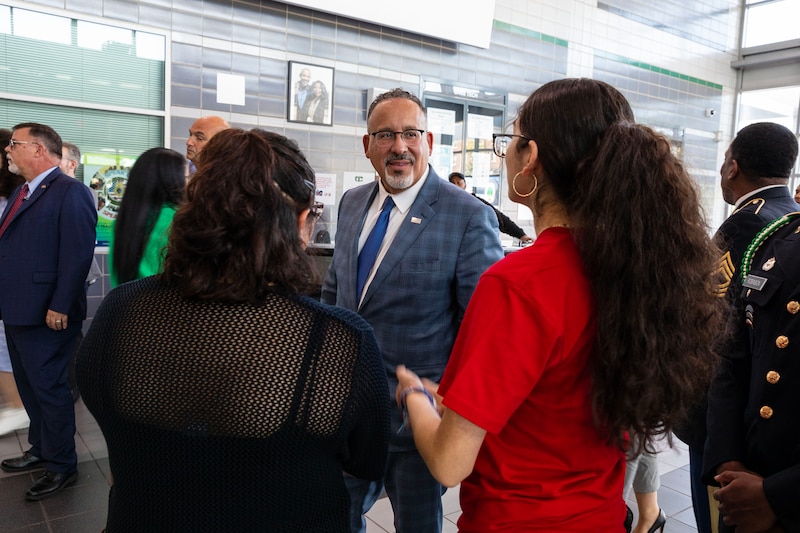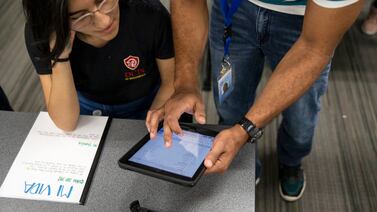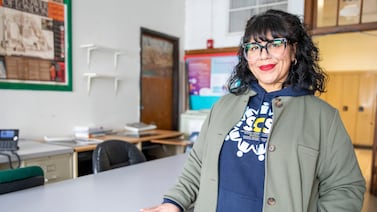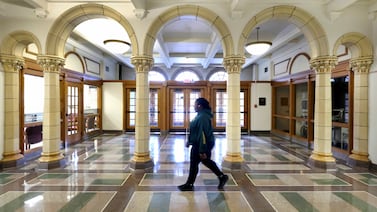Sign up for Chalkbeat’s free weekly newsletter to keep up with how education is changing across the U.S.
Over the last three years, an influx of pandemic aid has been transformative for many schools.
Some were able to hire social workers or give every child a laptop for the first time. Others fixed up old buildings, tutored struggling students, or revamped summer school programs.
But that era is quickly drawing to a close. And this month marks an important stop on the way toward the end of COVID relief.
Schools have to say by the end of this month how they plan to spend the last of their $123 billion from the American Rescue Plan, the third and final batch of schools’ COVID aid from the federal government. Then they have until Jan. 28, 2025 to spend the money.
The deadline at the end of September matters a lot: Schools that have any money not earmarked by then could eventually have to return the funds to the federal government. And some states have said they are concerned that schools may be at risk of not meeting that deadline.
Schools can seek an extension to spend their remaining aid until March 2026. But that won’t give them more time to officially decide how to use it — leaving some scrambling to come up with a plan before the deadline in 11 days.
“We have been in contact, in many cases multiple times, with districts and charters to remind them of their responsibility to obligate these funds,” Tom Horne, Arizona’s state superintendent, said in a news release earlier this week. “Most are showing the ability to do this, but a number of them are at great risk of reverting funds.”
Some Arizona school districts or charter schools had yet to commit any of their funds to a specific purpose, Horne said, and many others have earmarked only a fraction of their aid.
Michigan said it expected some federal aid would be returned by schools, but noted it had left less than 1% of the first two aid packages on the table.
“We do anticipate that some school districts and subgrantees will not be able to obligate funds by the end of the month and may revert funds back to the federal government,” Jeremy Meyer, a spokesperson for the Colorado Department of Education, told Chalkbeat in an email.
Still, federal officials told reporters on Thursday they were confident that little if any money was at risk of being returned by schools. Schools across the country have already spent and been reimbursed for 87% of their American Rescue Plan dollars, officials said. Much of the remaining money has been spent, too, but hasn’t yet shown up on spending trackers due to record-keeping lags.
Schools can’t use the aid to pay staff salaries after this month. But they can continue using it to do things like pay tutors to work with their students, finish up a construction project, or contract with a community organization to help with attendance outreach.

Federal officials have said they would look especially favorably on applications to spend the money beyond the usual timeline on Biden administration priorities, such as intensive tutoring, efforts to boost attendance, and extra instructional time.
Delaware, Kansas, Kentucky, Nebraska, and Puerto Rico have already applied for and received spending extensions on behalf of some districts and schools. These extensions cover some $1.1 billion in aid, federal officials said.
Several other states, including Colorado, Illinois, Maryland, Michigan, Mississippi, New Jersey, New York, Tennessee, and Washington, D.C., told Chalkbeat that they intended to apply for spending extensions in the coming weeks or months.
Nationwide, schools have already spent about $1.5 billion beyond original deadlines after getting extensions on their first two aid packages, federal officials said.
Schools have struggled for a number of reasons to spend down their pandemic aid, though often not for lack of need.
Construction delays held up spending in Mississippi, where schools spent a large share of aid on building projects. Meanwhile, supply-chain issues slowed spending in Tennessee and Illinois.
In Colorado, some schools had trouble filling certain educator positions amidst national shortages, or they planned to hire a company to provide training and were still waiting for that service to come through, Meyer wrote.
In other cases, not as many students or staff showed up to certain activities like summer school or after-school programs as originally anticipated, so they ended up costing less than expected.
Kalyn Belsha is a senior national education reporter based in Chicago. Contact her at kbelsha@chalkbeat.org.





